|

SINGLES’ SUNDAY
Sunday, November 6, 2011
Guest Writer for This Unit: Christina A. Jones, a doctoral candidate in Pastoral Care and Counseling at Emory University (Candler School of Theology) and an associate minister at Liberty Baptist Church in Atlanta, GA.
The unit you are viewing, Singles’ Sunday, is a compact unit. This means that it does not have a supporting cultural resource unit and worship unit. Instead, to enliven the imagination of preachers and teachers, we have provided scriptural text(s) that we suggest for this moment on the calendar along with a sermonic outline, suggested links, books, articles, songs, and videos. For additional information, see Singles’ Sunday in the archives of the Lectionary for 2008, 2009, and 2010. In 2008 Singles’ Sunday is celebrated along with Kinship Sunday. 2011 is the first year that the African American Lectionary has posted compact units for moments on its liturgical calendar.
I. Description of the Liturgical Moment
R: Janae Pitts wrote in the 2009 African American Lectionary commentary for Singles’ Sunday:
For generations, the Church has lifted marriage as a chief aspiration of Christian life, leaving single people waning under a cloud of stereotypes and inadequacy. In the wake of societal factors that substantially limit the quantity of marriageable partners, singleness has become a lifelong reality for many. For others, singleness is an intentional decision. For still others, it is a means for complete abandonment to Christ and the work of the Kingdom.
Singles’ Sunday draws singles-focused ministry onto the ecclesial main stage, affirming singleness as a valued part of the faith community and a high call to Kingdom service. Singles’ Sunday offers a healthy and helpful perspective of singleness and the various ways it benefits Christ’s Kingdom. Created as an opportunity to celebrate and affirm the significance of single persons in the work of the Church, Singles’ Sunday illumines the contributions of this often misunderstood demographic. Chris Jackson addresses some of the stigmas/myths attached to singles in his work, Black Christian Singles Guide to Dating and Sexuality. Jackson points out at least three myths often attached to singles: 1) if you are single, you are lonely; 2) If you’re single, you must be searching; and 3) if you are single you must be gay (if you are male and over 30).”1
Herbert Robinson Marbury wrote in the 2010 African American Lectionary commentary for Singles’ Sunday:
Predominantly, single black men and women fill the pews of African American churches across the United States. They faithfully serve the church in a variety of capacities from communion stewards to greeters, from ushers to choir members, from Sunday school teachers to trustees, and from worship leaders to clergy persons. However, rather than appreciating single persons for their service to the church or for their life accomplishments, many churches still view them as perpetually inadequate, incomplete women and men.
Singles’ Sunday is an opportunity to explore the possibilities of faithful living for what perhaps is a majority of members (ages 18–108) in most African American churches. In other words, singles are diverse. They are members who are pre-married, members who were once married and now divorced, members whose spouses have transitioned to eternal life, and members who simply have never been interested in the married lifestyle. In open and affirming churches, they include members who cannot legally marry. Singles’ Sunday ought not be identified with any particular age group. For example, celebrating Singles’ Sunday with Young Adult Sunday reduces singlehood to a necessary stage on the progression toward marriage. Such a view reinforces the common idea that single people are incomplete until marriage, flawed after divorce, and poor, pitiable persons after the death of a spouse. Rather, Singles’ Sunday is a marvelous liturgical opportunity for African American churches to explore with singles what it means to live full spiritual, intellectual, sexual, emotional, and above all faithful lives.
With this material as our backdrop, we provide a sermonic outline for Singles’ Sunday.
II. Singles’ Sunday: Sermonic Outline
A. Sermonic Focus Text(s): Ecclesiastes 3:1-8 (New Revised Standard Version)
(v.1) For everything there is a season, and a time for every matter under heaven: (v. 2) a time to be born, and a time to die; a time to plant, and a time to pluck up what is planted; (v. 3) a time to kill, and a time to heal; a time to break down, and a time to build up; (v. 4) a time to weep, and a time to laugh; a time to mourn, and a time to dance; (v. 5) a time to throw away stones, and a time to gather stones together; a time to embrace, and a time to refrain from embracing; (v. 6) a time to seek, and a time to lose; a time to keep, and a time to throw away; (v. 7) a time to tear, and a time to sew; a time to keep silence, and a time to speak; (v. 8) a time to love, and a time to hate; a time for war, and a time for peace.
B. Possible Title(s)
- Fulfilled in Your Season
- Embrace Your Season
- It’s Time to Celebrate Your Season
C. Point of Exegetical Inquiry
In any text there can be several words or phrases that require significant exegetical inquiry. There are two exegetical inquiries raised by this text in the form of phrases that bear additional meaning when placed in their historical, biblical context. The first of these phrases is found in v. 5: “a time to throw away stones, and a time to gather stones together.”
There are several biblical references to this analogy. For example, by the throwing of stones a field is destroyed, as in 2 Kings 3:25, or as expressed in 2 Kings 3:19 it is marred; and by gathering the stones together and removing them, it is brought under cultivation. This reference could also refer to casting stones out of a field or vineyard where they are hurtful, and to gather them together to make walls and fences of or build houses with. This is a strong preaching and teaching metaphor.
The second phrase requiring exegetical inquiry is found in v. 7: “a time to tear, and a time to sew.” This reference may refer to the practice of rending garments, in the case of blasphemy, and in times of mourning and fasting, and then to sew them together again when they are the moment/reason for rending is over, as in Isaiah 37:1. The Jews used this term in the rending of the ten tribes from Rehoboam, signified by the rending of Jeroboam’s garment in 1 Kings 11:30, and the sewing or uniting of which is foretold in Ezekiel 37:22.2 All seasons contain moments of tearing and sewing. The work of tearing is not easy but can be better dealt with once we understand that it occurs. Sewing is not always easy work either. However, it is necessary work if we desire to be whole servants of God.
III. Introduction
Solomon is recorded as having had hundreds of wives and concubines. How then can Solomon’s witness apply to those seeking to live faithfully as singles? Solomon wrote Ecclesiastes as a self-reflective text, not about how wonderful his life had been because he was not single, but about his discovery that marriage, among other things, had not been the key to happiness. After being educated at the finest institutions, having experienced the most grandiose of lifestyles, and having been given access to as many legal partners as his heart desired, Solomon came to a resolute conclusion that such things do not assure happiness.
Solomon spends the beginning of Ecclesiastes chapter three describing what he is assured of—that life is full of many seasons. He poetically describes seasons in life by employing familiar life events which are metaphors for much of life. Each metaphor reflects the organic, at times opposing, always shifting nature of seasons and life. According to Solomon, seasons will inevitably come and seasons will inevitably go; of this we can be assured. Solomon’s witness to singles today is that it is how we live in each of our seasons that makes the difference.
“Life is difficult” remarked M. Scott Peck. I would add and one can choose to make it less difficult or more difficult. Attitude is significantly important in altering perspective. However, a relationship with God is needed even more than a positive attitude. God working in our lives through each season is what makes the difference; it is what makes us alive, courageous, contributors, hospitable, and loving. So, live into each season with gusto and with God.
On Singles’ Day we recognize that no matter the reason for our single status, finding fulfillment in it is not about “status” at all. Instead as single people of faith, we can rest assured that though we do not have control of our status nor our seasons, we do have influence over how much fulfillment we get from each season we experience in life. We can be encouraged that in any season in life, satisfaction is available and it is not dependent upon one’s circumstances. How does one truly live in his or her season?
IV. Moves/Points
Move/Point One – Name your season.
a. Denial about your season leads to shame and frustration;
b. The act of naming provides a sense of agency and influence while in your season; and
c. Declare your season blessed!
Move/Point Two – Share your season.
a. “There is nothing new under the sun”—someone has already been where you are and can provide you with wisdom and insight into your season;
b. Seasons are best survived and most enjoyed when shared; and
c. Share your season as a testimony!
Move/Point Three – God is in every season.
a. Pay attention to what God is “up to” in each of your seasons;
b. God uses seasons to show us ourselves; and
c. God uses seasons to show us God’s self!
V. Celebration
I’m so glad that God is in every season! That shouts me. That makes me feel secure. That calms me. That uplifts me. That helps me keep on keeping on. With God, we can live faithfully through any and every season in life. Whatever your season of life you can survive it and even thrive in it leaning on God. The saints of ole used to say it like this:
Time is filled with swift transition.
Naught of earth unmoved can stand.
Build your hopes on things eternal.
Hold to God’s unchanging hand.
Trust in Him who will not leave you.
Whatsoever years may bring.
If by earthly friends forsaken,
Still more closely to Him cling.
Hold to His hand, God’s unchanging hand.
Hold to His hand, God’s unchanging hand.
Build your hopes on things eternal.
Hold to God’s unchanging hand.3
VI. Illustration
Ford: Built for the Road Ahead
My favorite [car commercial] tag is from Ford. Ford says that their cars are: Built for the Road Ahead! Ford believes that they have designed an automobile that can handle the road—any road that is out there. Whatever the circumstances, the situation, or the condition, Ford claims they have built a car that can handle it—the expected, the unexpected, the planned, the unplanned, the wanted and the unwanted, the seen and the unseen. Ford says bring it on. In making such a claim Ford is saying that what we put in our cars, the material we use, the aerodynamic configuration of our models are engineered in such a way to take the pressure of today’s driving conditions. Ford believes that no matter where their cars are—dirt road or four-lane high-way—they expect their cars to be able to perform on the journey. God is making the same claim about each and every one of us that Ford makes about their cars. We are “Built for the Road Ahead.” We are uniquely created, shaped, and designed to handle anything that we will face in this life….
— Carolyn Knight, “Built for the Road Ahead.”
The African American Pulpit (Summer 2007): p. 85
This illustration is taken from the Sermon Illustrations section of the African American Lectionary.
See the Sermon Illustrations section of the African American Lectionary for additional illustrations that you may wish to use in presenting a sermon for this moment on the liturgical calendar.
VII. Sounds, Sights, and Colors in This Passage
Some of the descriptive details in these passages include:
Sounds: The melodic and rhythmic flow of poetry; the cries from those who mourn; the cries of a newborn child; laughter;
Sights: Farmers planting and weeding; nations at war; people dancing; and
Colors: The colors of each season—green, yellow, red, and brown hues of flowers and leaves.
VIII. Songs to Accompany This Sermon
A. Hymns
- Hold to God’s Unchanging Hand. By Jennie Wilson
- Leaning on the Everlasting Arms. By Elisha A. Hoffman
- Great Is Thy Faithfulness. By Thomas O. Chisholm

- He Knows Just What I Need. Text and Tune, (HE KNOWS), by Dr. Robert J. Fryson
- Nothing Between. Text and Tune by Charles A. Tindley
- Be Still My Soul. By Katharina von Schlagel. Tune, (FINLANDIA), by Jean Sibelius
B. Songs for Choirs, Ensembles, or Praise Teams
- New Season. By Israel and New Breed
- Stay Saved. By Canton Jones
C. Modern Songs
- The Best Is Yet to Come. By Donald Lawrence
- Be Sure. By Karen Clark Sheard
- Let It Go. By J. Moss
D. Invitational Song
- Seasons. By Donald Lawrence

IX. Books to Assist in Preparing Sermons or Bible Studies Related to Singles’ Sunday
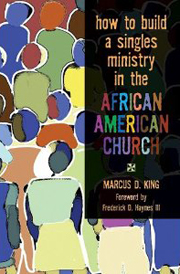
| King, Marcus D. How to Build a Singles Ministry in the African American Church. Valley Forge, PA: Judson Press, 2009. |

|
Warden, Michael. Alone with God: Biblical Inspiration for the Unmarried. Uhrichsville, OH: Barbour Publishing, 2002. |
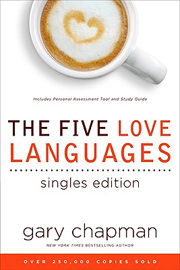
| Chapman, Gary. The Five Love Languages Singles Edition. Chicago, IL: Northfield Publishing, 2009. |
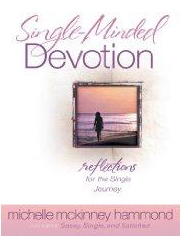
| Hammond, Michelle McKinney. Single-Minded Devotion: Reflections for the Single Journey. Eugene, OR: Harvest House Publishers, 2009. |
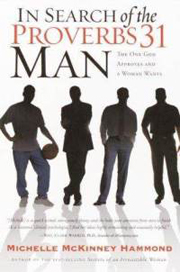
| Hammond, Michelle McKinney. In Search of the Proverbs 31 Man. Colorado Springs, CO: Waterbrook Press, 2003. |
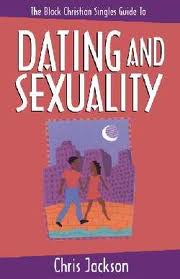
|
Jackson, Chris. The Black Christian Singles Guide to Dating and Sexuality. Grand Rapids, MI: Zondervan, 1999. |
Article
Byrne, Anne and Deborah Carr. “Caught in the Cultural Lag: The Stigma of Singlehood.” Psychological Inquiry, 2005, Vol. 16.
X. Links to Helpful Websites
XI. Videos, Audio, and/or Interactive Media
XII. Notes for Select Songs
A. Hymns
- Hold to God’s Unchanging Hand. By Jennie Wilson
Location:
African American Heritage Hymnal. Chicago, IL: GIA Publications, 2001. #404
- Leaning on the Everlasting Arms. By Elisha A. Hoffman
Location:
African American Heritage Hymnal. #371
- Great Is Thy Faithfulness. By Thomas O. Chisholm
Location:
African American Heritage Hymnal. #158
- He Knows Just What I Need. Text and Tune, (HE KNOWS), by Dr. Robert J. Fryson
Location:
African American Heritage Hymnal. #358
- Nothing Between. Text and Tune by Charles A. Tindley
Location:
Zion Still Sings for Every Generation. Nashville, TN: Abingdon Press, 2007. #71
- Be Still My Soul. By Katharina von Schlagel. Tune, (FINLANDIA), by Jean Sibelius
Location:
African American Heritage Hymnal. #135
B. Songs for Choirs, Ensembles, or Praise Teams
- New Season. By Israel and New Breed
Location:
New Season. Nashville, TN: Compendia, 2001.
- Stay Saved. By Canton Jones
Location:
Access Granted: The Password. College Park, GA: Arrow Records, 2008.
C. Modern Song(s)
- The Best Is Yet to Come. By Donald Lawrence
Location:
Lawrence, Donald and The Tri-City Singers. Go Get Your Life Back. Brentwood, TN: EMI Gospel, 2002.
- Be Sure. By Karen Clark Sheard
Location:
2nd Chance. New York, NY: Atlantic Records, 2007.
- Let It Go. By J. Moss
Location:
V2.... Inglewood, CA: Gospocentric, 2006.
D. Invitational Song
- Seasons. By Donald Lawrence
Location:
Lawrence, Donald and The Tri-City Singers. Go Get Your Life Back. Brentwood, TN: EMI Gospel, 2002.
Notes
1. Jackson, Chris. Black Christian Singles Guide to Dating and Sexuality. Grand Rapids, MI: Zondervan, 1999.
2. John Gill’s Exposition of the Entire Bible. Online location: Bibleclassics.com. accessed 15 April 2011
3. Wilson, Jennie. “Hold to God’s Unchanging Hand.” African American Heritage Hymnal. Chicago, IL: GIA Publications, 2001. #404
|